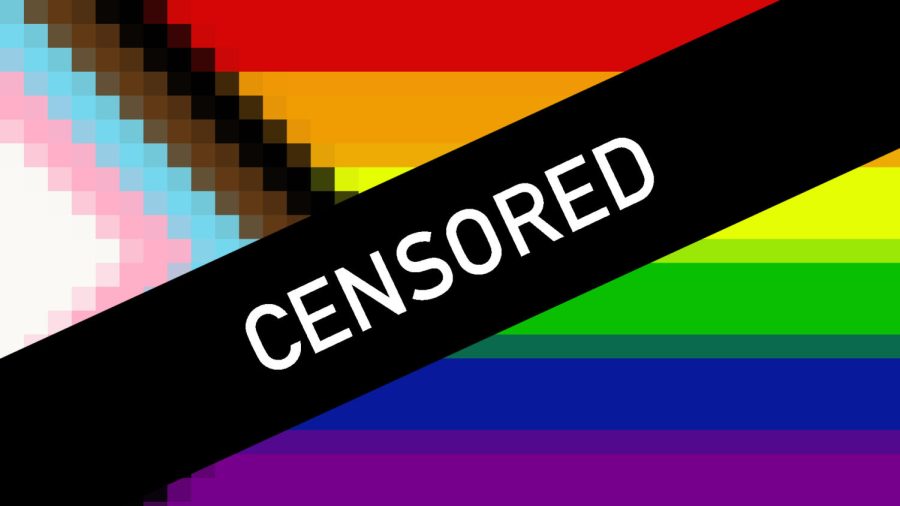Editorial: FUHSD and CUSD sexual education program lacks in LGBTQ+ topics
Graphic Illustration by Alara Dasdan
CUSD and FUHSD cover a wide range of topics in compliance with the CHYA. However, the act excludes LGBTQ+ topics in depth.
May 26, 2021
FUHSD and CUSD provide sexual education for seventh and ninth graders, in compliance with state policy. However, while the state program lauds itself for promoting safe sex and inclusivity, the curriculum is sorely lacking regarding issues affecting the LGBTQ+ community.
At present, California schools follow guidelines set by the California Sexual Health Education Act and the California Healthy Youth Act (CHYA). The former requires state-funded or community-based programs to teach medically accurate, comprehensive and nondiscriminatory courses that are appropriate for the age group it is taught to, though what is considered age appropriate is subjectively judged. The latter outlines the qualifications for guest speakers and the material taught to students as decided by the Adolescent Sexual Health Work Group (ASHWG). In FUHSD and CUSD, the classes consist of videos, worksheets, readings and other resources on consent, contraception, STDs, dating, sexual violence and inclusivity.
Although the curriculum does teach topics regarding inclusivity, a glaring absence in these courses are topics about LGBTQ-specific issues. On a statewide scale, the CHYA follows guidelines outlined by the American Civil Liberties Union. While it does acknowledge the existence of queer identities and emphasizes delivering the generalized lessons in an inclusive tone, such as by including gay couples in videos, nothing more is taught. In addition, gender identity and the transgender community are rarely mentioned outside of exploring stereotypes. Sexual education lessons are also often divided by sex, alienating non-binary and gender non-conforming students.
“I would definitely like to see basic coverage of identities that people might encounter on a day-to-day basis, like lesbian, gay, bisexual, pansexual and asexual,” senior and Gender-Sexuality Alliance (GSA) Secretary Emma Sumanaweeera said. “A lot of people don’t really know what it means to be transgender, so I think we definitely need more education on that.”
Without adequate information, students will turn to the internet, which can be a risky way to learn. The LGBTQ+ community is extremely hypersexualized in pop culture, and toxic relationships are glorified with little actual representation and diversity. This misrepresentation has manifested into a strong yet flawed online presence that students are exposed to.
“I feel like people exploring their gender and sexual identities are going to be making dangerous decisions because they’re uninformed or unable to get information,” senior and GSA President Ibraheem Qureshi said. “There’s a higher risk of getting STDs and a higher risk of being exploited, even though sexual education is supposed to mitigate these risks.”
FUHSD and CUSD are not entirely at fault for the lack of depth in their sexual education curriculum. Both are fully compliant with the CHYA. Rather, the act itself is flawed. A common point of conflict is a clause in the CHYA, which rules that the law only requires opt-out options for parents when the courses explicitly teach about anatomy. However, CUSD and FUHSD allow parents to opt out of more social topics as well, such as relationships and harassment, as the districts recognize that scientific and social subjects are inherently linked.
“Many of these topics, they go beyond just the science and go more into the relationship,” Associate Superintendent Trudy Gross said.
FUHSD currently follows the Health Connected program and CUSD uses Positive Prevention Plus. In 2017, CUSD proposed a more comprehensive sexual education curriculum from Teen Talk that included more LGBTQ+ issues. It was never truly implemented, however, due to severe backlash from parents, prompting the district to use Positive Prevention Plus instead. Common arguments against the more LGBTQ+ inclusive Teen Talk curriculum were that it was too explicit and did not align with some parents’ personal beliefs. However, there is nothing pornographic in nature in these courses, as its target demographic is teenagers.
Sex and relationships are an incredibly diverse, nuanced aspect of life, and by sterilizing it, students will fill in the blanks with their own research online, which is rife with inaccuracy and exploitative approaches to sex. Since the districts allow parents to opt out of more social topics, why not include LGBTQ+ issues in more depth? There is no reason to censor necessary information for all students when parents have the choice to control what their child is and is not exposed to.
A majority of parents in CUSD and FUHSD are from backgrounds where queer identities are shunned and considered taboo. There is a general misconception that by exposing children to it, the children will become queer, which is entirely false. This is the same mindset that perpetuates the myth that same-sex couples will raise gay children, which is no more likely than a heterosexual couple raising a straight child. It is entirely up to the child’s journey of self-discovery to realize their gender identity and sexual orientation, and it is the safer choice to educate them anyway so that they may make informed decisions.
The district is taking steps toward a comprehensive sexual education, but much more still needs to be done, especially in the area of LGBTQ+ issues. Though more inclusive than before, current sexual education classes are still inadequate and censor far too much for the sake of sheltering students without acknowledging the true diversity that helps them discover their identities.


































































